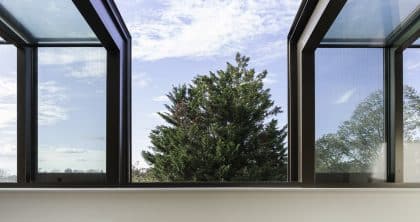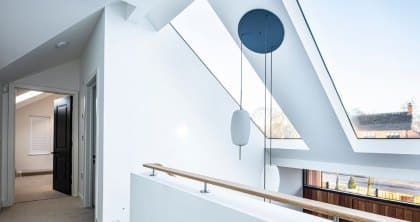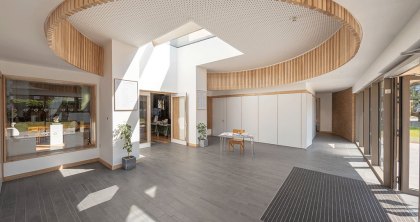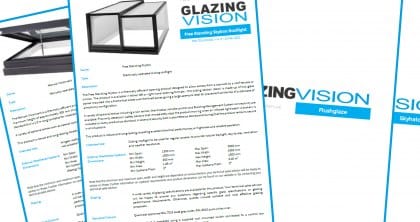Posted on June 20, 2018 in Blog
How is the thermal performance of roof glazing assessed?
Although rooflights and roof windows make up only a fraction of the market compared to doors and ‘conventional’ windows, they nevertheless make a significant contribution to the overall performance of a building.
Standards for assessing the performance of products, however, don’t acknowledge that contribution. The methods described in energy efficiency regulations concentrate on doors and windows, meaning assumptions and estimates have to be made when applying the principles to roof glazing products.
Recognising the future direction of building regulations in terms of fabric performance and the intention (since abandoned) to achieve a ‘zero carbon’ standard, Glazing Vision sought to undertake independent research with the aim of better understanding the performance of roof glazing products and reducing their potential to contribute to the performance gap.
Who do Glazing Vision work with on research projects?
Anglia Ruskin University used the open source computer program THERM to analyse rooflight frames and their interaction with the glass edge. From that modelling, a methodology was developed to establish the frame performance and, in conjunction with the centre pane U-value of the glass, produce a whole unit U-value.
This methodology effectively allows Glazing Vision to calculate accurate whole-unit U-values for any product, whether part of the existing range, conceived during new product development, or bespoke designs for individual projects.
As well as ideas for brand new products, potential alterations to existing products can be analysed through modelling, resulting in more efficient decision making – and roof glazing units that do what the manufacturer claims.
Does thermal performance change with the angle of installation?
Further illustration of the flaws in current standards can be found in the limiting U-values published in Approved Document L, the worst case values that any element of the building fabric can achieve. As the regulations stand, the value for rooflights is based on the performance as if installed in the vertical – like conventional windows.
In developing the revised Part L for 2013, the Department for Communities and Local Government (DCLG, now MHCLG) agreed with arguments put forward by Glazing Vision and the National Association for Rooflight Manufacturers (NARM) that declarations for roof glazing products should be based on their performance in the horizontal plane.
Unfortunately, there was too little time to consult on the proposed change and the document was published without the amendment. Manufacturers’ horizontal values have to be converted to represent vertical installation (with appropriate surface resistances) in order to check compliance. The fact remains, however, that declaring performance as if installed horizontally makes for a better comparison between products – especially ones featuring glazing in more than one orientation, such as roof lanterns with sloped and vertical panes.
What do the standards currently say?
Compliance calculations used to assess the energy efficiency of the whole building ignore the geometry of a roof glazing product and simply use the size of the opening. That makes it even more important to be confident of the whole-unit U-value rather than just a centre pane measurement.
BRE Report BR 443, which deals with conventions for U-value calculations), adds further complication by including a conversion table for declared ‘vertical U-values’ depending on angle of installation. For a rooflight installed ‘horizontal’ (at a pitch of 20 degrees or lower), the table suggests a U-value adjustment of +0.5 W/m2K.
Glazing Vision’s calculations show the adjustment should be +0.7 W/m2K for high performance double glazing (the adjustment for triple glazing is different), and they are working to see this reflected in a future revision of the document.
This topic, along with a lot more, is explored in our ‘Thermal Performance of Roof Glazing’ white paper, available to download for free here.













